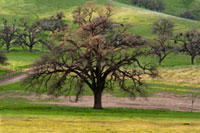Blog
New Offering: Member Survey plus Class
We offer a new service! Have you wanted to learn more about your society members current interests? We can help. When booking the presentation “Creating an Individualized Genealogical Educational Plan,” We can work with your society to help you learn more about your members’ current interests. Here’s what is included with the speaker’s fee: Work with your designated society member to create a customized survey Provide a link for society members to useProvide a brief report, with suggestions about how to...
read moreThe Virtual Record Treasury of Ireland
100 years ago at the start of the Irish Civil War, a fire at the Public Record Office of Ireland (PROI) in the Four Courts complex destroyed the Record Treasury, a repository holding seven hundred years of records. Trinity University began the Beyond 2022 project to bring together historians and computer scientists to reconstruct the library in a virtual format. The project identified replacement documents then built a virtual archive using digitized images of the records that survived, duplicates of documents that survived in other...
read moreBiological Anthropology and Genealogy
This past semester I decide to follow the archaeology course by studying more about anthropology. I took a course about Biological Anthropology (also known as Physical Anthropology). As a reminder, there are four branches of Anthropology, with the other three being Archaeology, Cultural Anthropology and Linguistic Anthropology. (See my blog post about Archaeology and Genealogy.) Biological Anthropology is a course for gaining a deeper understanding of how humans came to be. It is also a course that provides a strong foundation for...
read moreBook Review: “DNA for Native American Genealogy”
When the esteemed Roberta Estes of the DNAeXplained Blog writes a book about DNA, there is a justifiable expectation that the work will be accurate, informative and definitive. Among Ms. Estes many accomplishments are launching the Million Mito Project and being a National Geographic Society Genographic Project affiliate scientific researcher. This is a very thoughtful book, intended to put actionable information in the hands of readers that will guide them through the process of learning about Native American genealogical...
read moreYou can search the 1950 US Census!
Searching the 1950 US Census will be an awkward and cumbersome search until every field is indexed. But you can give it a try. Be sure you to navigate to the search page: https://1950census.archives.gov/search The search has limited features that include: name, state, county and enumeration district. You do not have to enter search terms any field. For example, you can leave the county or the enumeration district blank. If you cannot see the population schedule sheet for the search result on the right, click on...
read moreIt’s Been Confidential for 72 Years: The 1950 Census
There’s been great information published about the upcoming release of the 1950 US Census. I have been collecting it and want to share with you a reference of helpful resources, along with activities that you can do to prepare for the release! Important date: 1 April 2022 What is going to happen The 1950 US Census will be released, 72 years after it was taken. The National Archives and Records Administration (NARA), Amazon Web Services (AWS) and Artificial Intelligence will give us an initial index including name and...
read moreRootsTech 2022 lives on
Another RootsTech has come and gone, but RootsTech 2022 is really is not over! The classes that were recorded for RootsTech 2022 are still available. In fact, RootsTech made a decision to keep classes online for 3 years (unless the content creator asks for them to be removed). That means you have access to content from 2021 and 2022. Be sure to have a free FamilySearch account so that you can create a playlist as you search for classes. The web address is https://rootstech.org. Use the menu on the upper right corner and select the...
read moreArchaeology and Genealogy
This past semester I took an introductory class in archaeology. Archaeology is part of anthropology, so the class involved more than digging. I learned that archaeology was one of the four branches of anthropology, with the other three being: Physical (Biological) Anthropology, Cultural Anthropology and Linguistic Anthropology. Archaeology and genealogy share some similarities. Like genealogy, archaeology looks at peoples and their cultures through the physical things that they leave behind. Historical archaeology is most like...
read moreHappy Holidays 2021!
Hello Everyone, We hope this blog post finds you well and celebrating a happy and healthy holiday season. This year brought Zoom classes, a class accepted by RootsTech Connect 2022, graduation from the amazing ProGen Study Group program, an archaeology class, more WWI research and a new book coming out soon. So, stay tuned for more Zoom classes, books and more from us. Here’s to what 2022 brings! May all your weeks be filled with...
read moreBook Review: “New Pocket Guide to Irish Genealogy”
Being the owner of the Second Edition of the “Pocket Guide to Irish Genealogy” (2002), I was glad to review this all-new, revised and expanded version of the book. Irish genealogy can be challenging, and Ireland’s history has had an impact on researching Irish ancestors. As in previous editions, the book contains a concise outline of the history of Ireland and how it applies to genealogical research. The book contains the maps, as well as definitions of geographical and administrative areas that you will need to know...
read more


